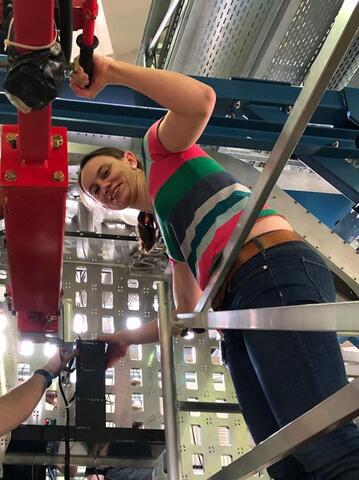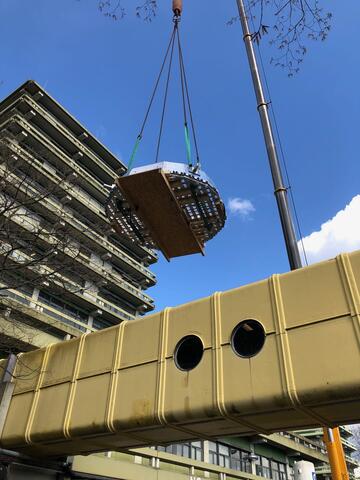Workshop „Physics Opportunities with Proton Beams at SIS100” was held in Wuppertal
PANDA meetings
04/03-08/03 2024 CM 24/1 in Münster
24/06-28/06 2024 CM 24/2 at GSI
25/06-26/06 2024 FEE/DAQ Workshop
04/11-06/11 2024 CM 24/3 at GSI
05/03-07/03 2025 WS at GSI
16/06-20/06 2025 CM 25 in Uppsala
The Endcap Disc DIRC for PANDA at FAIR
Mustafa Schmidt for the PANDA Cherenkov Group
PA-PRO-2018-009.pdf
(1.93 MB)
The PANDA detector at the future FAIR facility at GSI is planned as a fixed- target experiment for proton-antiproton collisions at momenta between 1.5 and 15 GeV/c. It will be used to address open questions in hadronic physics. In order to achieve a sufficient particle identification, two different DIRC detector concepts have been developed. This talk will cover the Endcap Disc DIRC detector which is placed at the forward endcap of the PANDA target spectrometer and will provide a 3σ separation of pions and kaons up to a momentum of 4 GeV/c for polar angles from 5° to 22°. The most important component of the DIRC detector is a 2 cm thin fused silica radiator plate that is divided into 4 identical quadrants. The surfaces are polished with high precision in order to guarantee little photon losses by total reflection and conserve the Cherenkov angle during propagation through the optical system. Intrinsic chromatic errors will be minimized by the implementation of an optical filter. The readout system consists of 96 readout elements with focusing optics and attached MCP-PMTs to focus the photons that are produced by the Cherenkov cone of the traversing particle and acquire their position and timing information. This new detector concept requires the development of dedicated reconstruction and particle identification algorithms which permit an efficient analysis of the measured time-correlated photon patterns. Time and event based simulations with dedicated Monte-Carlo simulation frameworks have been used to validate the PID requirements of the DIRC counter. Additionally, the Monte-Carlo simulations have been used to estimate the radiation dose in different detector volumes in order to compare these values with actual measurement results.





